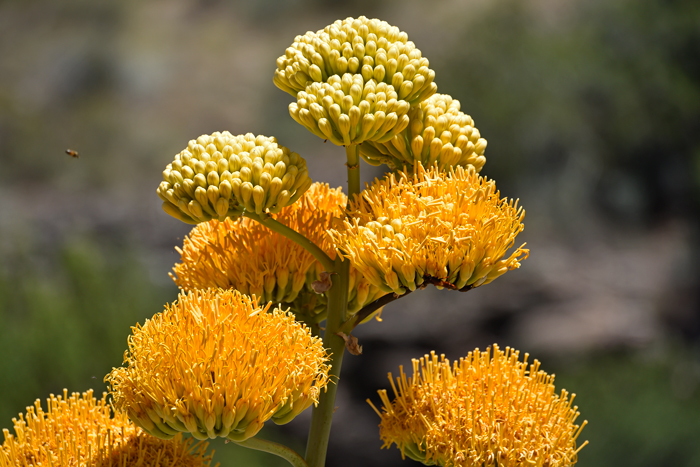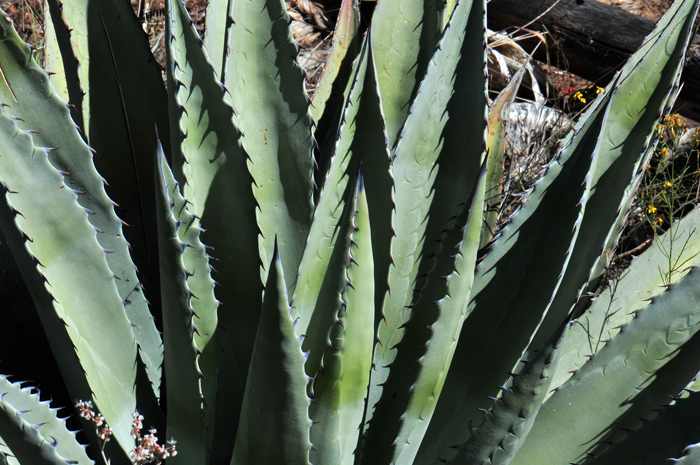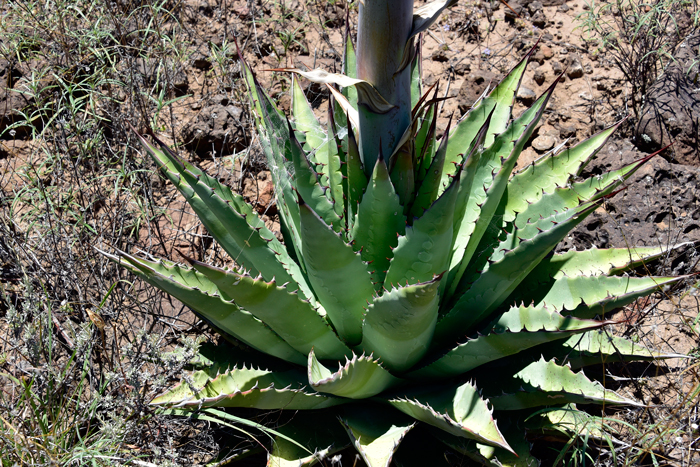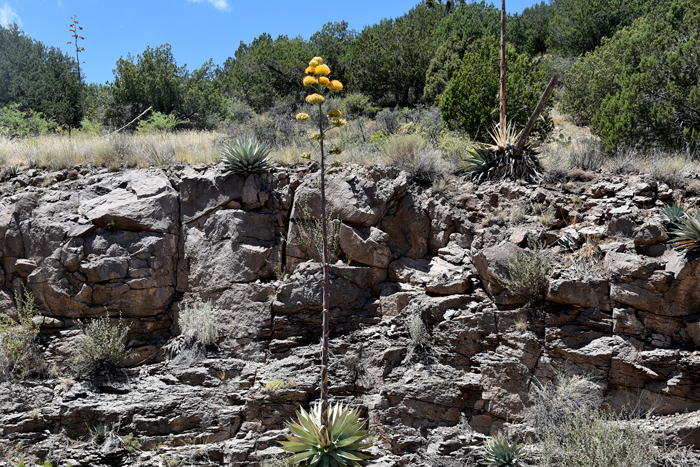Agave chrysantha, Goldenflower Century Plant




Scientific Name: Agave chrysantha
Common Name: Goldenflower Century Plant
Also Called: Golden Flowered Agave, Golden-flowered Agave (Spanish: Maguey)
Family: Agavaceae, Agave or Century Plant Family (Reclassified to Asparagaceae)
Synonyms: (Agave palmeri var. chrysantha)
Status: Native
Duration: Perennial
Size: Flowering stalk up to 20 feet more or less; plants 3 feet by 5 feet.
Growth Form: Forb/herb, shrub, subshrub; plants without stems (acaulescent); rosettes.
Leaves: Green, yellow-green, or glaucous, prickles stout; leaves in a rosette; leaves lanceolate; margins dentate, and containing prickles.
Flower Color: Yellow, golden yellow; flowers numerous, congested in panicles, flowers on top of tall fleshy stalk; without bulbs, bracts remain on stalk after stalk dies; fruit is a capsule.
Flowering Season: June to August.
Elevation: 3,000 to 7,000 feet.
Habitat Preferences: Rocky hillsides, common along Apache Trail; sandy to gravelly soils; desert scrub, grasslands, pinyon-juniper and oak woodlands.
Recorded Range: Agave chrysantha is rare in the United States where it is only known from central and southern Arizona. In Arizona it is more abundant in the central part of the state with fewer records towards the southern part of the state. Goldenflower Century Plant is common where found in Arizona.
North America & US County Distribution Map for Agave chrysantha.
U.S. Weed Information: No information available.
Invasive/Noxious Weed Information: No information available.
Wetland Indicator: No information available.
Threatened/Endangered Information: In North America Agave chrysantha and its' sub-species are listed by the State of Arizona as salvage restricted under ARS § 3-903(B)(2).
In the Southwestern United States: Arizona has 12 species of Agave, California has 4 species, New Mexico has 5 species, and Texas has 9 species, Nevada and Utah have 1 species. All data is approximate and subject to taxonomic changes.
Comments: Agave chrysantha is known only from Arizona. It is very similar in appearance to, and is known to hybridize with Palmer's Agave, Agave palmeri. This species attracts insects including bees, as well as birds and bats. Use for landscape purposes is risky as A. Chrysantha is a target species for the Agave snout weevil.
In Southwestern Desert Flora also see: Lechuguilla, Agave lechuguilla; Parry's Agave, Agave parryi; Schott's Century Plant, Agave schottii; Toumey's Agave, Agave toumeyana v bella; Toumey's Agave, Agave toumeyana.

